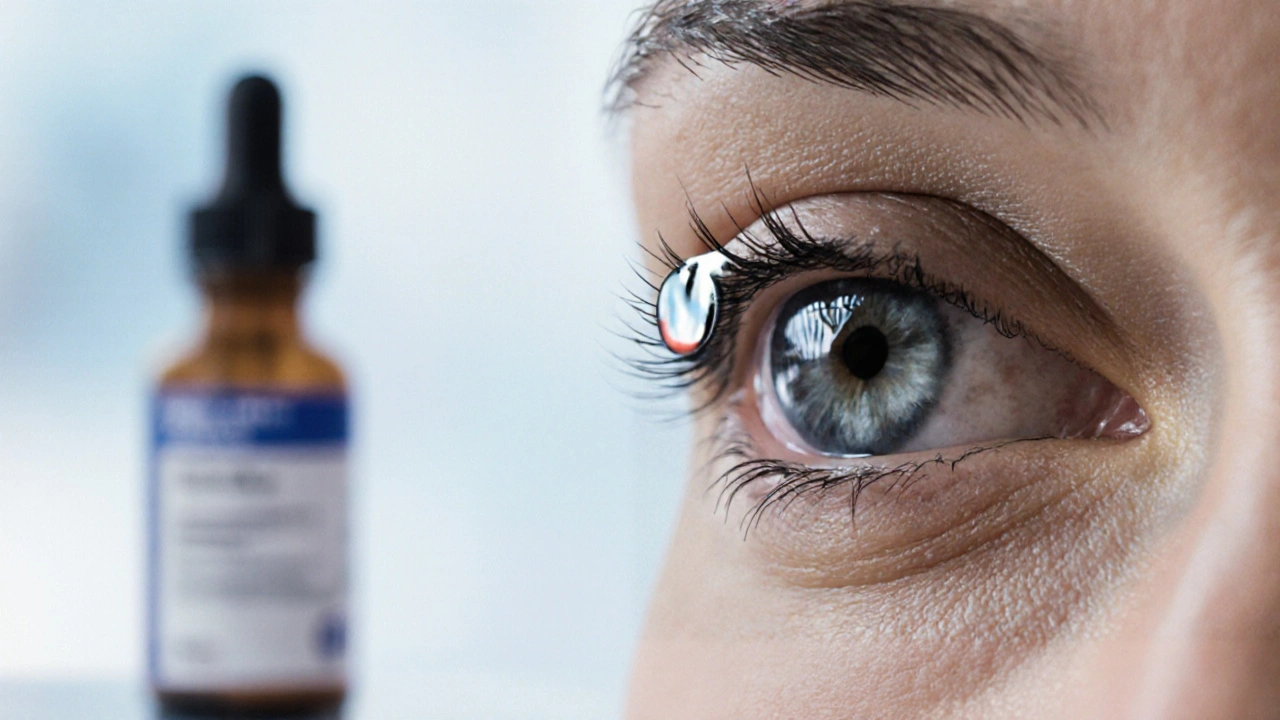When dealing with eye inflammation, ocular corticosteroids, synthetic steroid medications applied directly to the eye to calm swelling, pain, and allergic reactions. Also known as steroid eye drops, they are a cornerstone for many ophthalmic conditions because they act fast and target the problem site.
Most eye conditions that need these drugs involve inflammation, the body’s immune response that causes redness, swelling, and discomfort in ocular tissues. By binding to glucocorticoid receptors in the cornea and conjunctiva, ocular corticosteroids shut down inflammatory cascades, reducing cytokine release and stabilizing blood‑eye barriers. This rapid suppression makes them ideal for uveitis, post‑surgical irritation, and severe allergic conjunctivitis.
Although the term “steroid eye drops” is often used interchangeably, there are distinct formulations—solutions, suspensions, and ointments—each with different penetration abilities. Steroid eye drops, liquid preparations that deliver the active compound across the corneal epithelium are preferred for short‑term flare‑ups because they wash out quickly. Ointments, on the other hand, stay longer on the surface and are useful at night or for chronic conditions, but they can blur vision.
Getting the dosing right is crucial. Most regimens start with one to four drops per day for the first few days, then taper based on symptom improvement and intra‑ocular pressure checks. Overuse can saturate the eye’s metabolic pathways, leading to side effects. That’s why clinicians often give a clear taper schedule—step‑down dosing helps the eye adjust and reduces rebound inflammation.
Side effects aren’t rare. The most common include temporary blurred vision, a mild burning sensation, and increased tear production. More serious concerns involve cataract formation and elevated intra‑ocular pressure, especially with prolonged use. Patients should be warned to report persistent eye pain or visual changes right away.
Pediatric patients present an extra layer of caution. Children’s eyes absorb steroids more readily, so doses are often lowered, and follow‑up visits are scheduled more frequently. The risk of growth‑suppressing systemic absorption is low with topical use, but the ophthalmologist must still balance efficacy against safety.
One of the biggest red flags is the potential for glaucoma, a condition where pressure inside the eye rises, threatening optic nerve health. Certain ocular corticosteroids, especially potent ones like difluprednate, can increase intra‑ocular pressure within weeks. Regular tonometry checks become mandatory for high‑risk patients, and if pressure climbs, doctors may switch to a weaker steroid or add pressure‑lowering drops.
Monitoring doesn’t stop at pressure checks. A comprehensive exam includes slit‑lamp evaluation of the cornea, lens, and retinal status. If signs of cataract or persistent inflammation appear, the treatment plan is adjusted—often by reducing the steroid strength or frequency.
When steroids aren’t suitable, non‑steroidal anti‑inflammatory eye drops (NSAIDs) like ketorolac or diclofenac provide an alternative. They target different pathways, offering relief with a lower risk of pressure spikes, though they may be less potent for severe uveitis. Some clinicians combine a low‑dose steroid with an NSAID to harness the best of both worlds.
Below you’ll find a curated list of articles that dive deeper into specific drugs, buying guides, safety tips, and comparative reviews. Whether you’re looking for cheap generic options, want to understand side‑effect profiles, or need step‑by‑step dosing advice, the posts ahead cover the full spectrum of ocular corticosteroids knowledge you’ll need.

A concise guide comparing FML Forte (fluorometholone) with top eye steroid alternatives, covering potency, side effects, cost, and best-use scenarios.
Read More© 2025. All rights reserved.